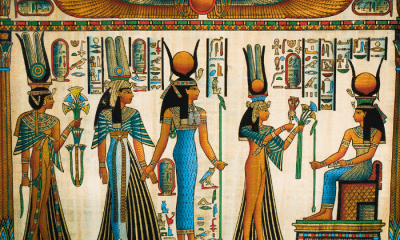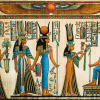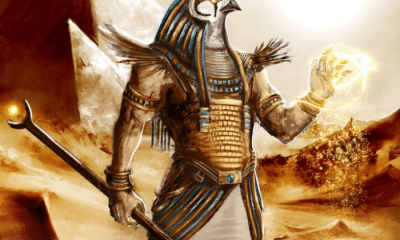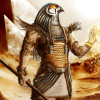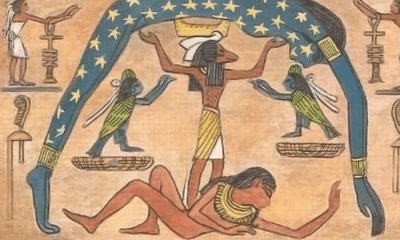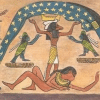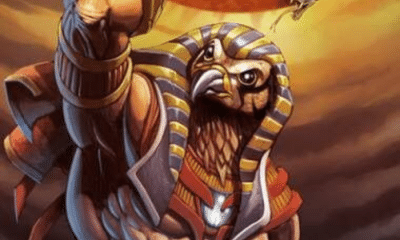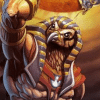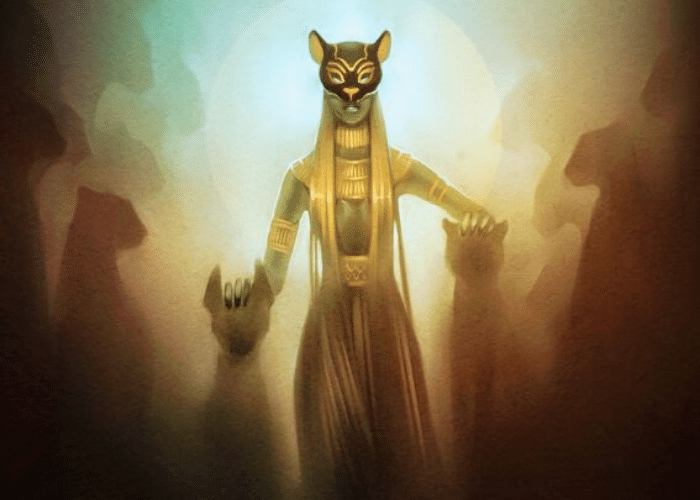
Egyptian
Bastet: The Ancient Egyptian Cat Goddess
Bastet: The Ancient Egyptian Cat Goddess
Bastet was the Egyptian goddess with the head of a feline. How close was she to a real cat, though? Keep reading to find out!
Most cat owners have heard the joke that their cat thinks it’s the king or queen of the house. If you lived in ancient Egypt, that close might have been a lot closer to reality.
Cats in ancient Egypt were so loved that harming one was a serious crime. They were adorned with golden jewelry, fed the best food, and even buried with honors fit for royalty.
This was not just because Egypt was a society of cat lovers. Cats were revered as the sacred animals of Bastet, one of the pantheon’s most important protective goddesses.
Most deities in ancient Egypt were associated with at least one animal, however, so why did cats get such special treatment. The reason may be because the cat goddess of Egypt perfectly reflected the many benefits her animals gave to the people of the ancient world.
Bastet and the Sacred Cats of Egypt
Because of the way in which ancient Egyptian hieroglyphics were written, historians cannot be clear on how Bastet’s name would have been said.
Many sources indicated that the final -t sound in feminine names was likely silent, so the goddess is often referred to as Bast or Best. Reconstructions from Coptic, meanwhile, show that by the 1st millennium BC her name could have been pronounced as Ubast or Ubaste.
It is possible that all of these pronunciations could have been used at various points. Linguists know that the spoken language of Egypt changed much more throughout history than the form of written hieroglyphics, so it is likely that Bastet’s name changed through the ages.
This is particularly true since Bastet is known to have been worshipped in some form very early in Egyptian history.
Her earliest form was of a lioness or a lion-headed goddess. Similar to the lion goddess Sekhmet, she was a protectress.
Both Bastet’s form and her function evolved over time, however.
By the Third Intermediate Period (c. 1070 – 712 BC) she began to be depicted more as a domestic feline than a wild lioness.
Unlike many gods of ancient Egypt, Bastet was shown in both human and animal form. She appeared as either a cat or a cat-headed woman in almost equal measure, unlike other gods like Anubis which were almost exclusively shown as hybrids.
Bastet was the official protectress of all of Lower Egypt. This made her not only the protector of the Pharoah, but also of the sun god Ra who was the king’s divine form.
Her association with Ra made her a sun goddess as well as a protector. Because cats are active at night, however, she was also connected to the moon.
Bastet was often shown fighting Apep, the great serpent who threatened Ra.
Her association with Lower Egypt, however, led to something of a division within her cult. In the Nile Delta, the protection of the crown of Lower Egypt led to her continued depiction as a more ferocious goddess.
Bubastis, as this aspect of Bastet was named by the Greeks, retained the lion’s head and strength of earlier feline goddesses.
In most of Egypt, however, Bastet continued to be more connected with domesticated animals than their wild cousins. Bastet was always a protective goddess, but she took on a more calm and nurturing characterization as she became increasingly associated with housecats.
The importance of Bastet led to one of the hallmark religious traditions of ancient Egypt. Because he was a protectress of the Pharoah and the sun, Bastet’s animals became sacred throughout Egypt.
Historians believe that cats may have had a similar status in Egypt as cows have traditionally held in Hindu society. Harming a cat would be a great offense against the goddess and, it has been suggested, would be severely punished by the authorities.
Cats were held in such high regard that they were often mummified after death. They were likely not sacrificed intentionally, but instead were given the same honors as a king or queen when they died of natural causes.
When the cat goddess’s temple at Thebes was excavated, over 300,000 mummified cats were exhumed. While some were buried in simple wrappings, others had the same rich adornments and detailed embalming as would be found among the highest classes of the human population.
While few myths remain that center on Bastet, it is clear that she was an important goddess. The strength of her cult, the prevalence of her images, and the expense devoted to her sacred animals all show Bastet’s strength in the Egyptian world.
My Modern Interpretation
Bastet began as a fearsome, protective lioness. Her domain truly developed, however, when she became associated with domestic cats.
While Bastet was eventually given many roles in Egyptian belief, each one reflected the place of real animals in Egyptian life.
Cats were first domesticated from African wildcats in about 4000 BC. As a major agricultural civilization in the region these wild cats were native to, Egypt would have been one of the first cultures to embrace the domesticated feline.
It is generally believed that cats were first domesticated in order to protect grain stores from rodents and other vermin. This could have been the basis for Bastet’s role as the protector of Ra.
The sun god was closely linked to agriculture and plant growth in Egyptian thought. By protecting grain, cats protected something that was linked to the king of the gods.
Of course, Bastet may also have been linked to Ra based on the affinity real cats showed for the sun. Because cats are fond of sleeping in warm patches of sunlight, their ancient owners might have imagined an affinity for the god of the sun.
Bastet also fought Apep, the giant snake monster. In real life, cats were known to fight off the venomous snakes that were native to the Nile Valley, as well as insects and other pests.
Over time, Bastet’s protection became less strictly physical. She was thought to protect people from diseases as well as dangerous beasts.
One element of this may have been the protection cats offered against venomous snakes. Another, however, could have been based on their work against rodents.
While the ancient Egyptians did not understand precisely how diseases were spread, the introduction of cats as a natural form of pest control would have led to a decrease in the number of illnesses carried by rodents. Although the mechanism may not have been known, a correlation between cats and a lower rate of disease would likely have been noticed over time.
The eventually led to Bastet being a goddess of protective ointments and medications as well. These salves were typically kept in jars of alabaster, which may have been named after her.
By the time of the Greeks, Bastet had also taken on the role of a maternal goddess and protector of the young. Contemporary sources explicitly say that this was because cats were gentle and nurturing mothers who often gave birth to large litters of kittens.
While many gods were associated with animals with only tenuous links to their domains, it is clear that Bastet’s character was based around the animal that represented her. As a protector, mother, and guardian against illness, Bastet showed the benefits and behaviors that were evident in her sacred animal.
Bastet was a goddess whose cult grew more broad and important as her animal became more prevalent. Eventually, cats were revered by the people of Egypt above any other animal because they were truly the living image of the goddess they inspired.
In Summary
Bastet, also often called Bast, was an Egyptian goddess with the head of a cat. The protector of Lower Egypt and the sun god Ra, Bastet grew to be an important deity in the Egyptian religion.
Originally depicted as a lioness, but the 1st millennium BC Bastet was almost exclusively shown as a domesticated cat. Only in parts of the Nile Delta did she retain the form of a lioness, although housecats were still associated with her cult there.
As Bastet became more closely associated with domestic cats in her imagery, she also took on more of their traits in her domains.
Ra, the sun god, was closely linked to grain and agriculture. Egyptians likely domesticated cats to keep rodents out of their grain supply, forming the first link between cats and the sun god.
They also chased away snakes and other vermin. Since Ra’s greatest adversary was a serpent, it was easy to imagine Bastet batting it away as his protectress.
A side effect of keeping both rodents and snakes away was a decrease in the spread of diseases through the food supply. Eventually, Bastet was so closely linked with disease prevention that the stone used for medicinal ointment jars, alabaster, was named for her.
Bastet even took on the role of a mother goddess based on the fertility and maternal instincts of domestic cats.
Because of Bastet, cats were revered in ancient Egypt. In truth, however, the goddess was worthy of reverence because of her cats rather than the other way around.


